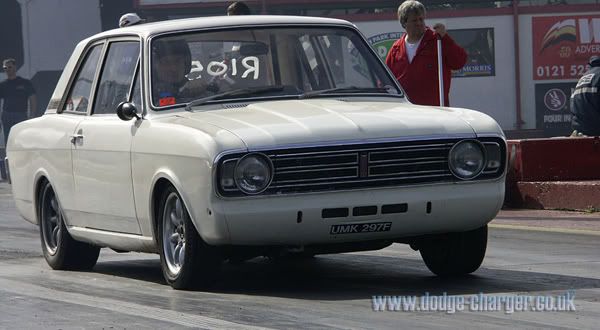|
|
|
|
|
Today, I ‘as mostly been removing bolts. Broken bolts. When I took the cover off the bumper I used my little rattle gun. It’s good and will get more rusty bolts out than I can with a spanner, but I still broke 6 or 8 of them. Whether or not I keep the bar or replace it I still need to get the cover back on this one just to see if it fits any better. So I spent today welding a bolt on the end of the stubs and then removing them.  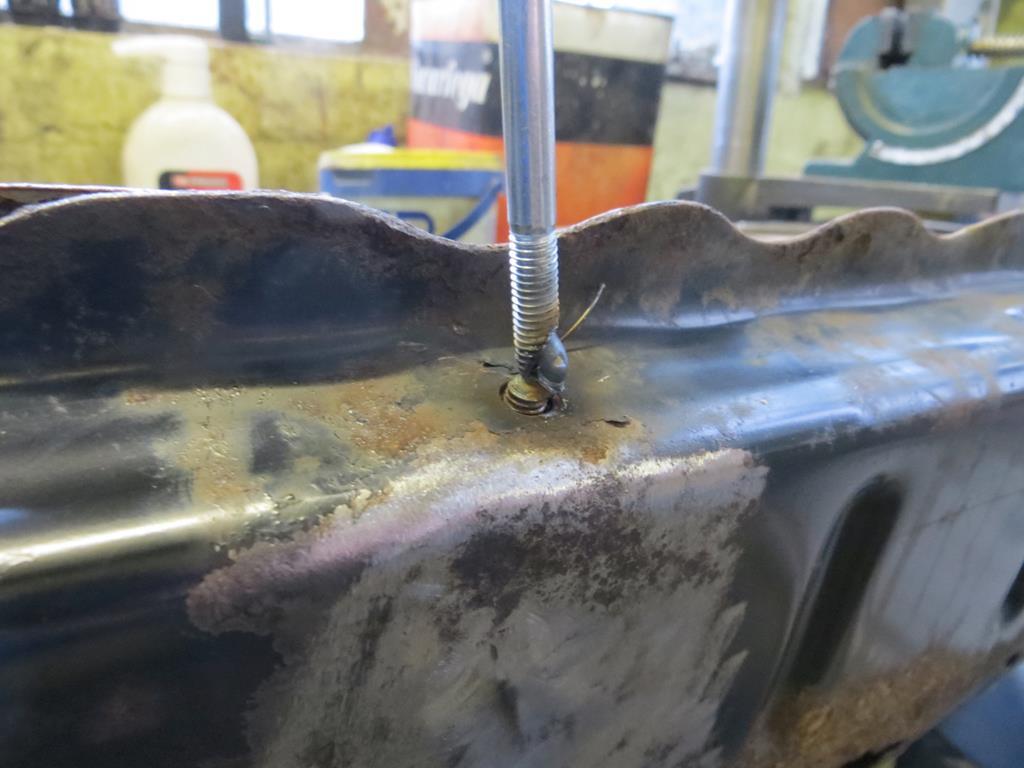 That one ^^ is barely stuck, but once built up with weld they normally come out. Assuming, of course, you don’t accidentally weld them to the surrounding steel. The heat of welding breaks the rust joint. Even so some of the stubs took a several goes to get them out.  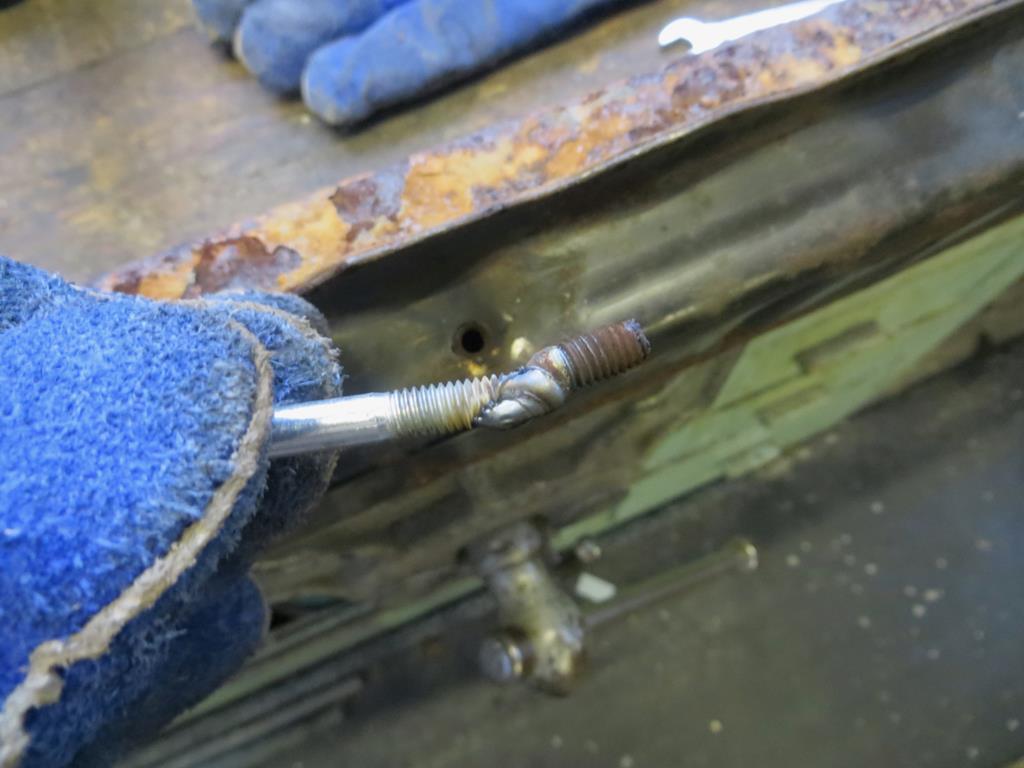 But, eventually, I won. And then gave up for the weekend. |
| |
|
|
|
|
|
|
|
|
|
Yesterday, however, I did this… (Do you like the way I jump back and forth like there is some sort of temporal anomaly in my front garden?) On the last MOT there was an advisory that the exhaust was blowing. There was a hole in the back edge of the can. I’d gooed it up in the past but it had come apart again. The sensible thing would be to go out and buy a Mongoose system and the job’d be sorted. But when have you known me to be sensible? Good. Lets be stupid then. So I was thinking… What would you do if you couldn’t buy a new exhaust. Well you’d buy some stainless pipe and some silencers and make one. So I started looking at stainless exhaust componants. The MR2 has a really big silencer running across the back of the car and I can’t see an off the shelf silencer that’s that big. So then I started wondering if I could use rear can from another car that’s readily available. Ideally, centre entry and exit on one side. And then, by chance, the rear silencer of Mrs Sweetpeas’ Vitara failed. So we replaced it. Guess what… Centre entry, outlet on the right side. Perfect. So I kept it to play with.   It’s not in bad condition apart from the inlet which has holed near one of the stays.  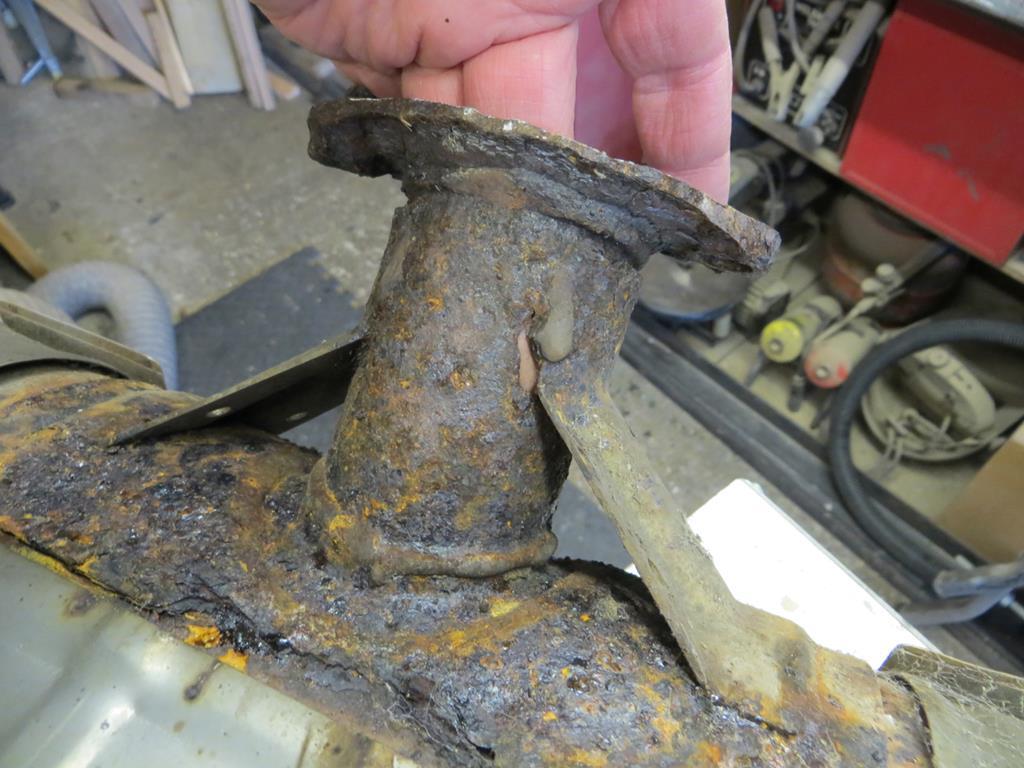 I'm just playing with this - so I’ll patch it.  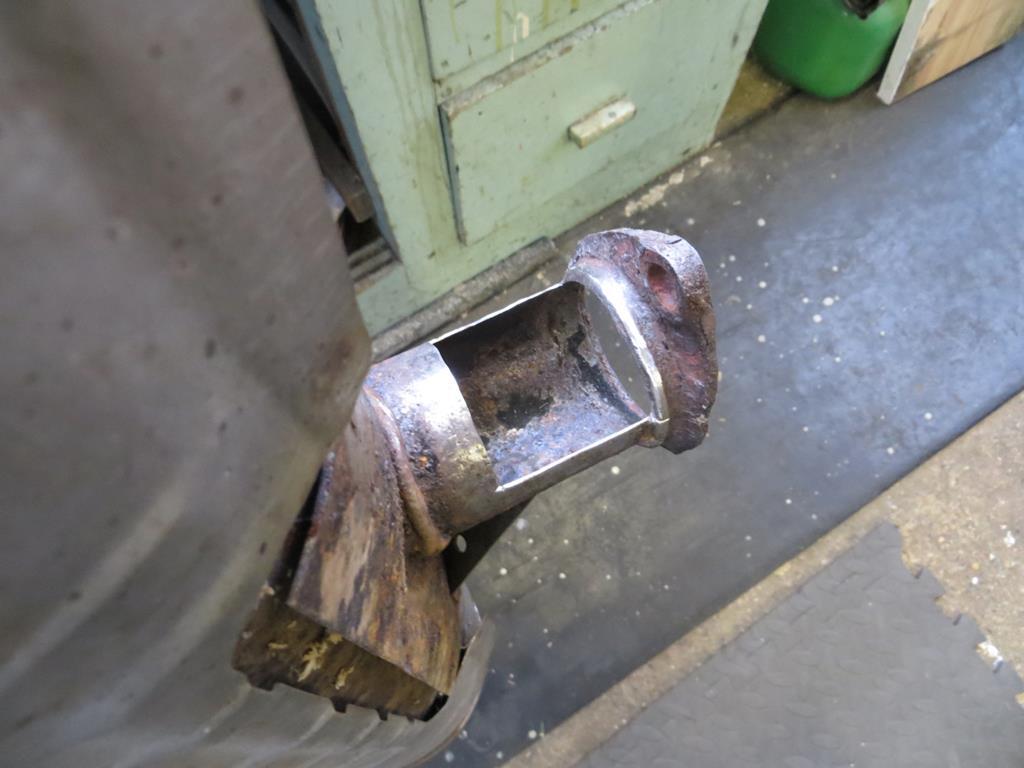 Took the stay off, chopped the nasty bit out and replaced it.  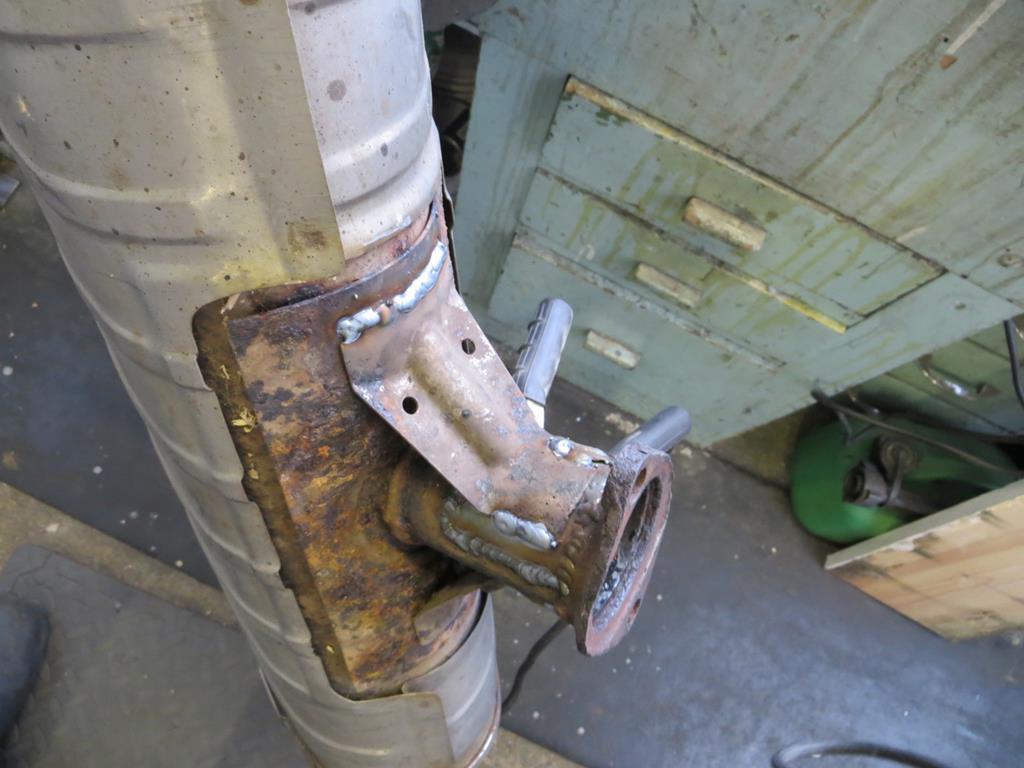 Nice. I know what you’re thinking. Why didn’t I just cut the pipe off and replace it with a new flange? Well, because I didn’t want to lose the relationship between the can and the flange. Which is a terrible excuse. I guess the point is to use a stock silencer with as few mods as possible. So I want to keep it close to stock. Who knows, I might stick with this idea if it works. So the plan is like this… Here’s the MR2’s stock exhaust.   If I cut the pipe off just after the flexi and bin the rest the Vitara box might fit in place. Like this…  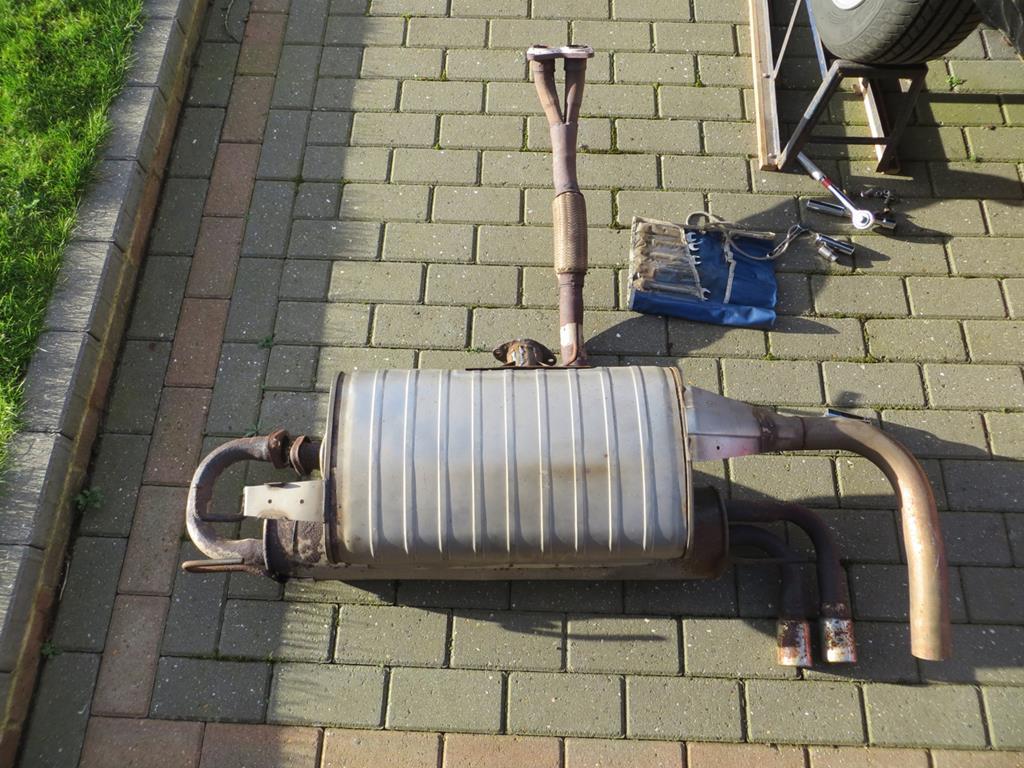 For this to work I’d need to move the outlet to the left and swing inlet across. But it looks plausible. Here is the Vitara can under the existing ones on the car.  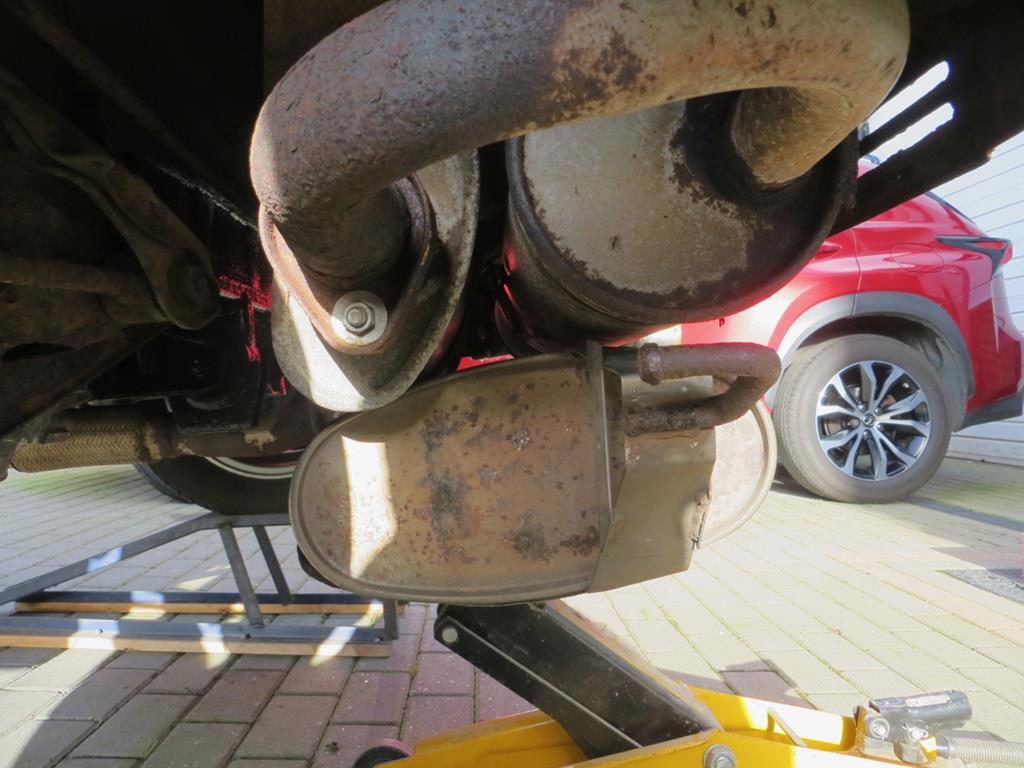 So, it’s about the right sort of size to replace the existing two, just a bit shorter in length. Looks promising this. It’s worth playing with. OK, I need to make some mounts. I can reuse the existing framework on the can and just bend up some new rod bits. I have some A2 stainless threaded rod. Not perfect but it’ll do. Remember this is a proof of concept not a final product. Bunged it in the vice, popped a pipe on the end and heaved it round.  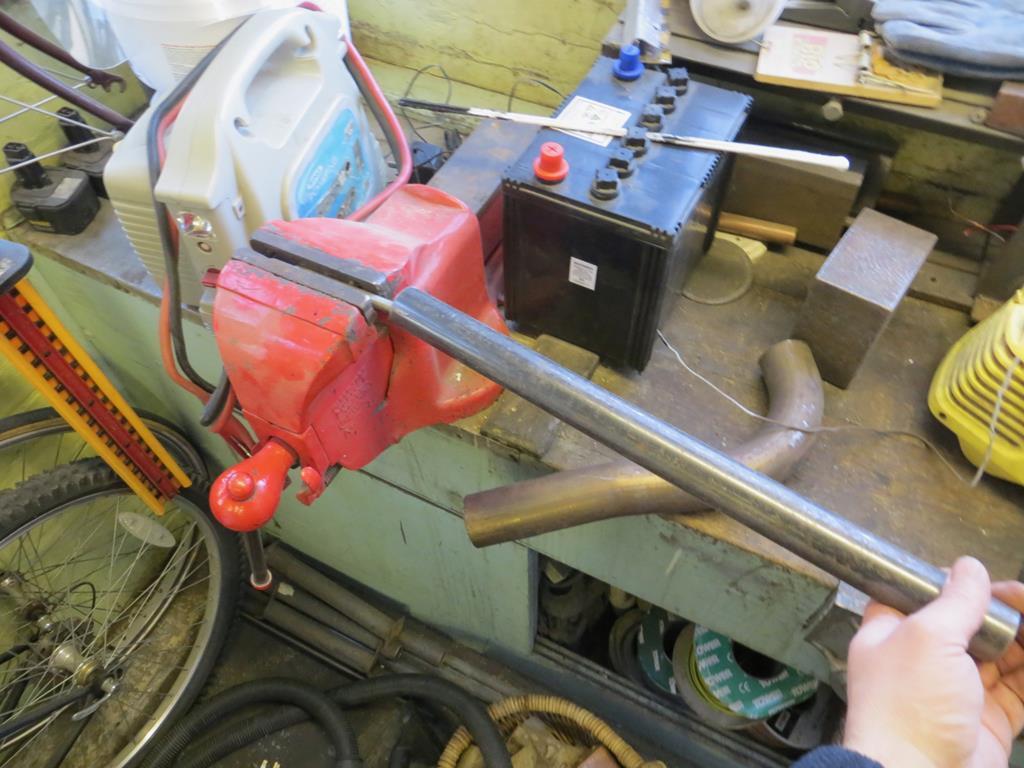 One…  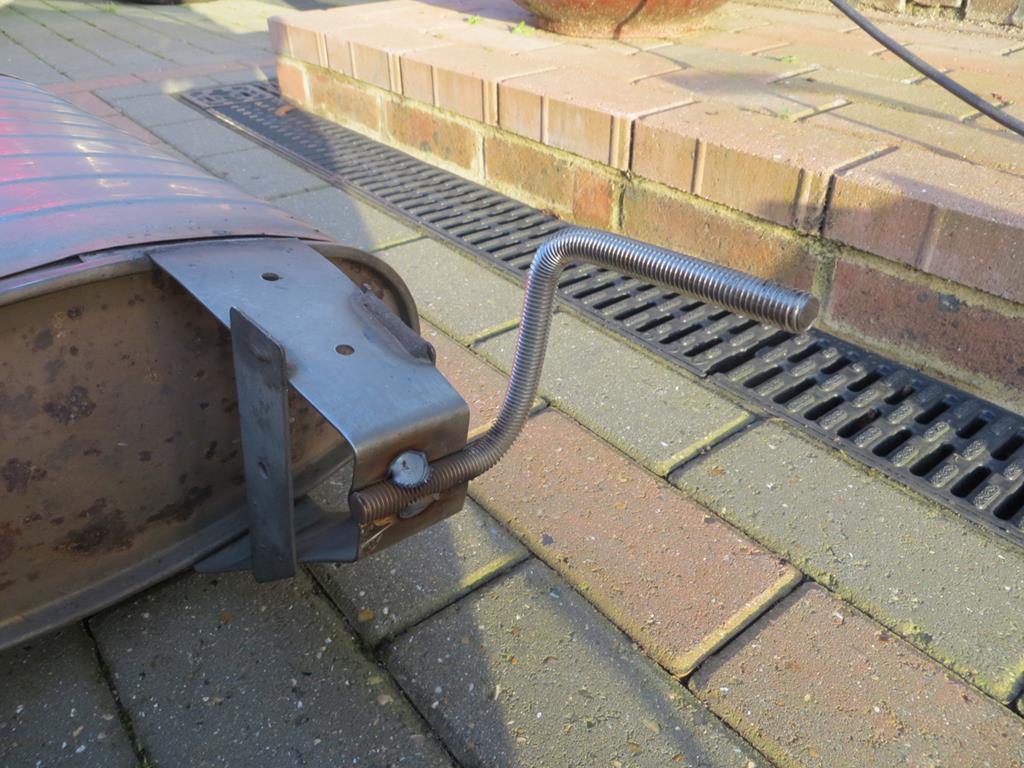 Two…   That’ll need a cross brace I think. Three!   All pick up the cars original rubber mounts. It’s all just tacked up at the moment. The top of the silencer is touching one of the old heat shields so that needs bending up out of the way. But, in general, it fits. And from the back…   Not too shabby. Need to sort out the pipework next. It’ll wind up with a single 2 inch outlet initially. That might be in a few weeks though. I’ve got other things to do. Nighty night! James |
| |
|
|
|
|
|
|
|
Nice thinking...As ever!  |
| |
|
|
|
|
|
|
|
Good idea for the taillight gasket 👍🏻 However.... the use of silicon sealant isn’t the greatest idea. It contains acetic acid that will make the steel rust. Rather look for a non acetic acid base or polyurethane sealer instead. Thanks for the heads up JB. I knew silicone sealant isn't the best stuff for cars but didn't know exactly why. Am I right in thinking that the acetic acid is what is released as it cures? Yep. That’s the stuff that gives you the insatiable urge to eat fish and chips just as you have your fingers covered in the stuff because you decided to smooth it out a bit 🤣🤣. There are quite a few that are acetic acid free when you start reading the destructions on the tube... The front windscreen on the Mazda was bodged in with silicone,( not the correct windscreen sealant that doesn’t contain acetic acid). There were places where the windscreen surround was totally rotten through. I thought it very strange,because it wasn’t in places where water could accumulate,like down the sides of the windscreen where the water would always run off. Showed a professional windscreen fitter who has been fitting windscreens for years,and the first thing he said,without having even seen all the sealant I had removed,was, “ this was stuck in with normal silicone sealer” Up to that point,the thought that it was the silicone sealer that wreaked havoc, hadn’t even crossed my mind. Having looked into it a little bit further, it seems to be possibly a bit more complex than just the acetic acid chomping the metal. It’s also got something to do with galvanic corrosion. This seemed more plausible to me,as in the Mazdas case, there are stainless steel pins spotwelded into the windscreen surround that plastic clips clip onto. I think the steel/ stainless steel/ h2o/ acetic acid combo landed up as a chemical experiment gone wrong . Think wet cell battery,and it vandalised itself to death 🤣. Apparently, silicon sealer also causes galvanised steel to rust. There are two basic types of silicon sealer, acetic acid cure and neutral cure. For this application you want neutral cure. Bathroom sealer is designed for sealing plastic,glass and aluminium. “Aah,” I hear you say.” Hmm aluminium. Bang goes your theory.” 😂. Actually not. You see, most aluminium extrusions are anodised,and things don’t stick to it that well. The acetic acid in the sealer actually etches into the aluminium promoting a better bond..So neutral cure for the win 😊 |
| |
Last Edit: Feb 3, 2020 4:00:11 GMT by Deleted
|
|
MiataMark
Club Retro Rides Member
Posts: 2,971
Club RR Member Number: 29
|
|
|
|
|
That makes sense as acetic acid is very good for de-rusting components.
|
| |
1990 Mazda MX-52012 BMW 118i (170bhp) - white appliance 2011 Land Rover Freelander 2 TD4 2003 Land Rover Discovery II TD52007 Alfa Romeo 159 Sportwagon JTDm
|
|
|
|
|
|
|
I've been reading up and it's confusing the hell out of me!  But then I failed chemistry when I was at school so I have an excuse... |
| |
|
|
jules
Part of things
 
Posts: 75
|
|
|
|
|
I can very much confirm silicone sealant causes galvanised steel to rust. Unwittingly when working in a builders merchants with a lot of outside galvanised racking I thought it was a good idea to stick a load of labels to the racking with silicone sealant ! Within months the galvanised steel was rusting around the labels/ silicone sealant. Fortunately the management weren't very observant and I had left a long time before the racking rusted through causing thousands of pounds worth of damage and endangering life and limb !!
|
| |
|
|
|
|
|
|
|
I've been reading up and it's confusing the hell out of me!  But then I failed chemistry when I was at school so I have an excuse... Quite simple. If it smells like fish and chips,don’t use it as tail light gasket maker. If it smells like ,well, I don’t know, mushy peas,your probably either got mushy peas or a neutral cure silicon... I think the older silicon sealers contained more “ free”acetic acid that caused more of a problem. In my case I reckon the windscreen bodge on the Mazda was probably done in the 80’s |
| |
|
|
v8ian
Posted a lot
  
Posts: 3,831
|
|
|
|
|
I can confirm that silicon bathroom sealant is a real NoNo, 40 years ago, people restoring cars came across this wonderful substance that you can seal car body panel repairs with, I have bought repaired/restored cars that have had been sealed with silicon, if you pulled the silicon off, it was almost like pulling a Zip which removed the panel underneath, the misuse has been a problem for many years, its an Ignorance thing, nobody ever thought the silicon would be a problem, it was a wonder sealant that would stop the ingress of water as it did on bathrooms, and of course the silicon manufactureres were happy to sell it to everybody who would use it,
|
| |
Atmo V8 Power . No slicks , No gas + No bits missing . Doing it in style.
Austin A35van, very different------- but still doing it in style, going to be a funmoble
|
|
|
|
|
|
|
|
i'm genuinely surprised that black sanitary silicone is a thing, well, black bathrooms initially. but i see that it is "no nonsense" screwfix product, which literally means its true.
maybe version 2.0 can be tiger seal (insert automotive PU seam sealer of choice) and for the mirror'd version for the other side
|
| |
Last Edit: Feb 4, 2020 14:21:19 GMT by darrenh
|
|
jamesd1972
Club Retro Rides Member
Posts: 2,917  Club RR Member Number: 40
Club RR Member Number: 40
|
|
|
|
|
Suspect that once its cured its much less of a problem as the acetic acid has done its thing by departing.
PU does seam like a good alternative mind, I used the Silkaflex one from screwfix to secure the wobbly tow bar electrics back on with a reinforcing plate and it did a great job.
James
|
| |
|
|
|
|
|
|
|
|
You can get aquarium grade silicone sealer, they use it for building fish tanks and it is acetic acid free I believe
|
| |
|
|
|
|
|
|
|
|
What I'm confused about is this...
If I search for "acetic acid rust removal" I get lots of stuff about how good it is for removing rust.
If I search for "acetic acid causing corrosion" I get lots of stuff about how it chomps through steel.
Can't have it both ways. But both seem to be true. Why? How?
I suspect the theory about accidentally creating batteries and galvanic corrosion is very true. It might go some way to explain why it seems to be so bad with galvanised steel but you'd think it'd attach the zinc first...
But I don't think galvanic corrosion is the whole story either because it'd only be a problem where there were two metals and that doesn't seem to be the case.
The only thing I can think is that, when you use it for rust removal it's only in contact for a few hours. When you bond your windscreen in it's there for years.
It probably attacks both the rust and the steel but it attacks the rust quicker.
The idea that, once it's cured it's safe is one I'd thought about too. But I used silicone to plug the gaps in the floor boards downstairs. To stop the chimneys pulling cold air from under the floors. Worked a treat. But it made the floors slippy until it cured - which I'd expected. What I didn't expect was how long it was before the problem went away. It was months.
So I think silicone sealants release their acid over very long periods.
The other thing, from JB's vinegar comments, is that the modern stuff doesn't smell anywhere as bad as the old stuff used to. Back when I was a kid the smell was so strong that it burned your eyes. So maybe the modern stuff is considerably better than the old stuff?
See... So many questions that I might have a hope of answering if only I'd paid attention in chemistry.
Going forward, as we senior management types say, I think I've got some Sikaflex in the garage but I'm not sure exactly what it is or how stiff it is. I feel further gaskets coming on.
And I'm really tempted to make some squares of steel, put silicone on one and put them in the garden for 6 months or a year.
I need to know these things!
|
| |
|
|
jules
Part of things
 
Posts: 75
|
|
|
|
|
I need to know these things!
I pleased someone out there does !! If you could try lots of different metals and silicone's, I would be interested in the results.
|
| |
|
|
|
|
|
|
|
|
Yes Acetic acid will remove rust. Just like citric acid ,it does a very good job. It leaves clean, bare metal behind,once you have cleaned off all the crud with scotchbrite. But, herein lies the rub. What will rust quicker, a dirty ,greasy,lump of steel or a chemically clean bit of steel? You clean something with citric acid and you can basically watch it flash rust in front of your eyes as it dries, if you don’t do anything to stop it...
As for your comment on the galvanised ...It does attack the zinc first, exposing the underlying steel to the atmosphere so it can rust 🤣🤣
|
| |
Last Edit: Feb 5, 2020 7:23:51 GMT by Deleted
|
|
|
|
|
|
|
|
I must have some shiny innards as when I was tiling we used to lick our finger to help smooth the sealant. Must've swallowed loads of the stuff.
|
| |
|
|
|
|
|
|
|
I must have some shiny innards as when I was tiling we used to lick our finger to help smooth the sealant. Must've swallowed loads of the stuff. I learnt to lick my finger before sticking it into the silicone 🤣🤣🤣 |
| |
|
|
MrBD
Part of things
 
Posts: 10 
|
|
|
|
Well, not the best time to have learnt about the issues with silicon sealant a few weeks after doing both my rear lights with some of it and in a pretty messy way at that 
Oh well maybe I got lucky because I don't remember it smelling like vinegar...
|
| |
|
|
Wilk
Part of things
 
Posts: 528 
|
|
|
|
|
Usually the high modulous stuff is the one with the potent smell. It’s also mega stretchy when set and sticks like sh1t to a blanket
Just be weary when licking fingers to smooth the stuff out as it’s contains anti fungicide with is carsonagenic. First hand experience talking here 😢
|
| |
Last Edit: Feb 8, 2020 21:51:05 GMT by Wilk
If it can be fixed with a hammer, then it must be an electrical fault
|
|
|
|
|
Feb 16, 2020 21:21:22 GMT
|
On the back bumper front… Hold on. That’s just confusing. I’ll try again. On the subject of the back bumper… That’s better. I’d used the garage ceiling to press a curve back into it and I wanted to put it back on the car to see what it looked like. But before I could do that I had to straighten a bracket from the left hand end. Said bracket bolts to the end of the crash bar and supports the corner of the plastic cover - you’ll see shortly. But when a previous owner stuffed the rear quarter into a post they also mangled the bracket.   The lovely red curved bit should be straight. Somewhere along the yellow line would be an advantage. And the other end…  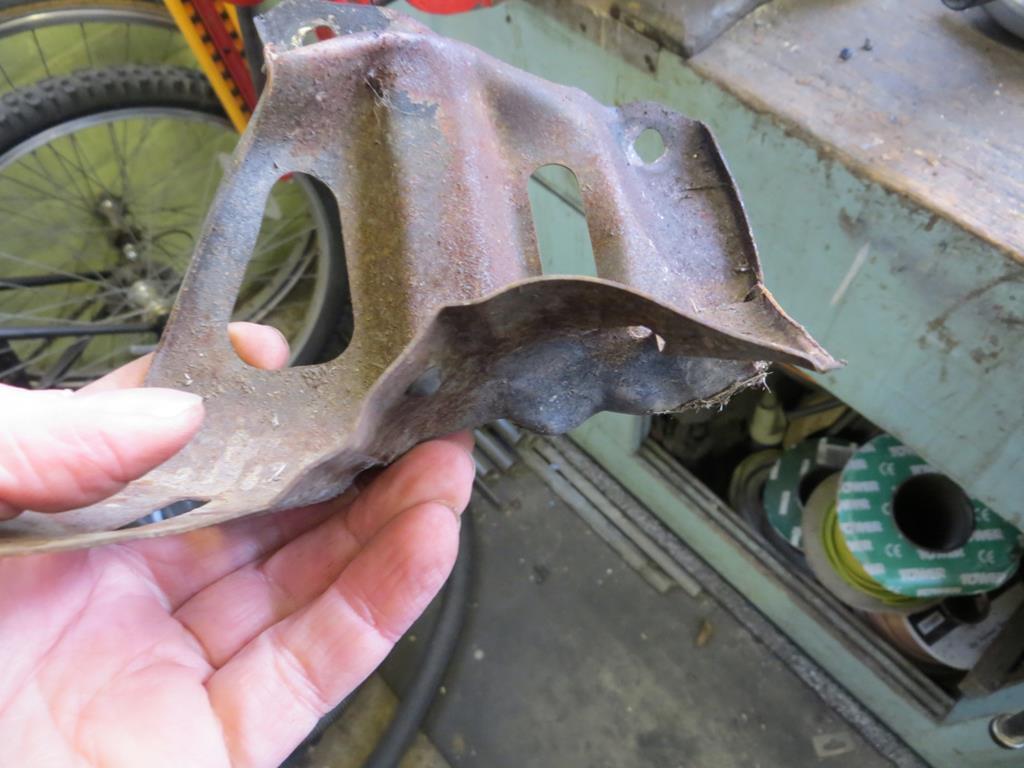 Yeah. Not that shape. To cut a long story short, after much work with a hammer and dolly we get this.  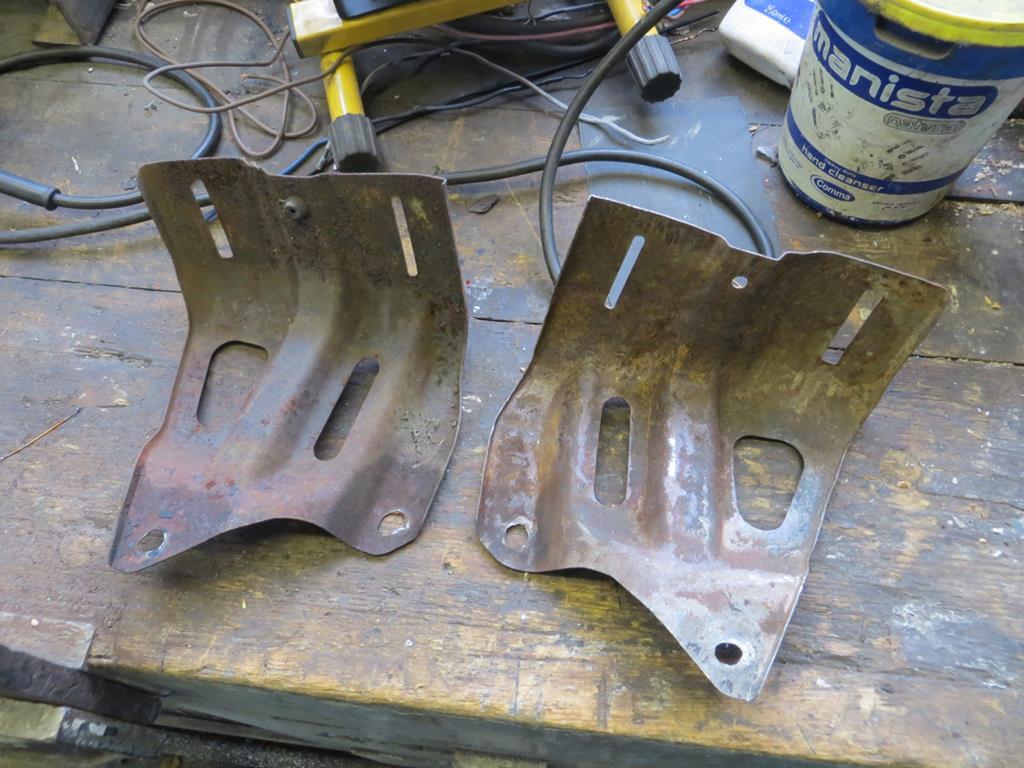 Not much to tell between them now. Here’s the previous mangled one back on the end of the bumper.   Worst you can say now is that the photo isn’t sharp. Goodness knows why. Two out of ten, must do better. Sooooo. What’s it like on the car? Well, to start with, I can’t get one of the bottom bolts back in so it’ll have to come off again to find out what’s wrong. The captive nuts and bolts did look pretty mangled so I suspect I’ll have to replace them and then it’ll be ok. If you’ll join me in the bedroom for a moment… NO NOT LIKE THAT! To look at the car from above.   It now has a nice curve along it’s length and, to my eye, looks like it matches the back of the car better. It was too flat across the middle. And the right hand corner has tucked back in better. However…   This gap has closed up a little but I still reckon it’s too wide and I can’t work out why. I quickly measured from the door shut to the leading edge of the bumper and I think it’s even on both sides. Hmmm. I’ll think about this but I think I might leave it until I get the new wing on the left side and see how it looks then. James |
| |
|
|

























